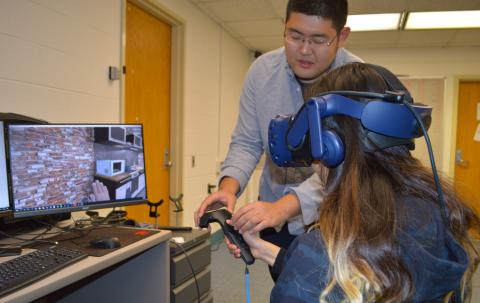
Virtual reality is becoming more widespread in gaming, shopping, research, education and training, but is not a perfect match to the real world. Discrepancies create usability problems with accessing virtual tools, or getting distracted, confused, lost or cybersick. Jiayan Zhao, a doctoral student in the Department of Geography in the College of Earth and Mineral Sciences and a developer at the Center for Immersive Experiences, is conducting experiments to reduce usability problems and improve the user’s virtual experience.
“From the perspective of spatial cognition, the virtual environment can largely simulate the actual environment, but some users experienced serious motion sickness — something we don’t want to have happen— and they could not finish the experiment or their data could not be used,” Zhao said. “There are huge individual differences in virtual experiences. Some people may already have had experience with VR, so they performed well, but for those who never used VR before, they had challenges in performing the tasks.”

